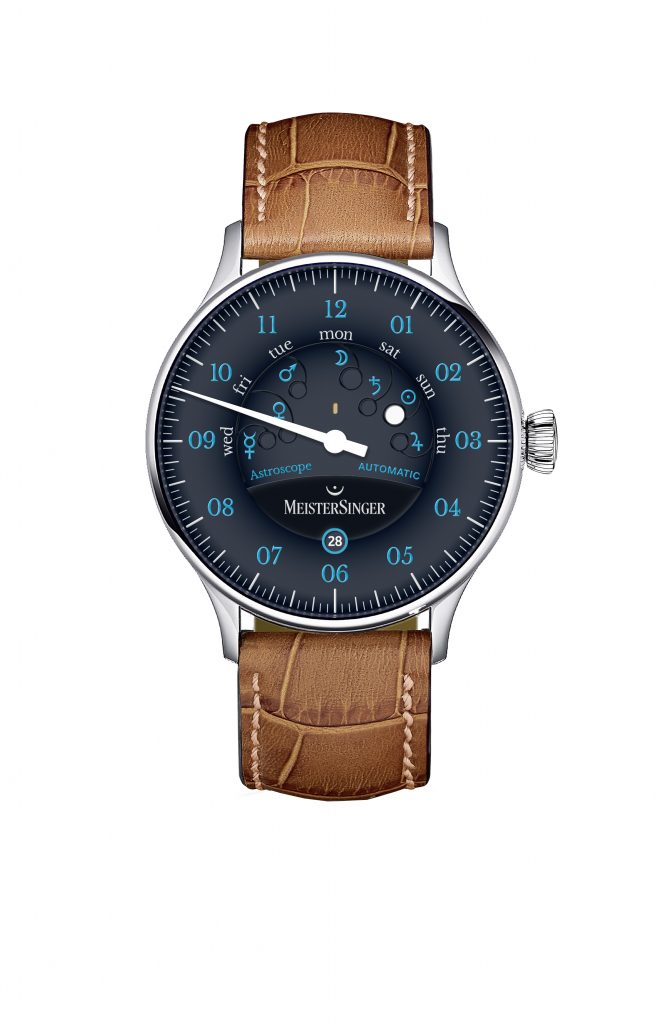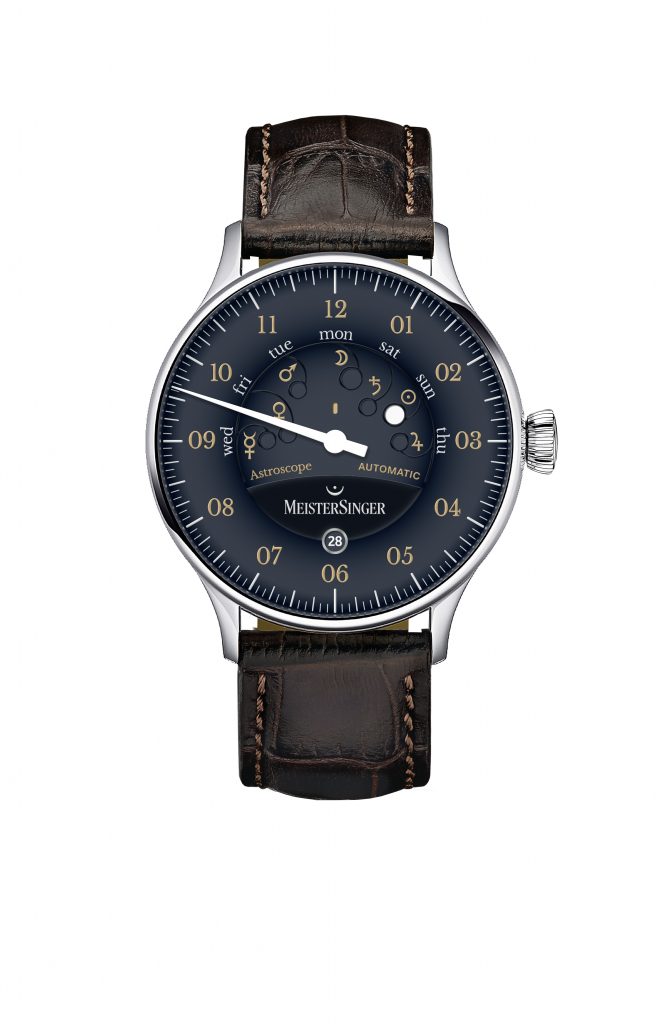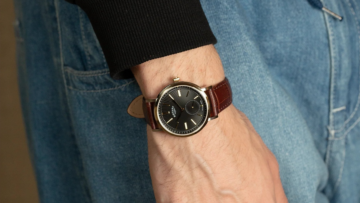Horology is guided by the movement of the sun. The first timekeeping resources were as simple as the position of the sun in the sky or the shadows cast on a sundial. Now, horology has evolved with the groundbreaking creation of clocks and watches dating back to the 15th century. Not only are we able to keep track of the time, as the industry has evolved, new complications have surfaced for wristwatches. One of the most popular being the moonphase complication.
As with the movements of the sun, humanity has also utilised the lunar cycle as an indication of time more for the purpose of tracking the months. The combination of horology and moonphase functions is a perfect synergy that is used within watches across the market. One of the latest examples of this combination is MeisterSinger‘s newest model, The Astroscope.
The Astroscope
MeisterSinger is well known for its bold and unique designs which started with their single-handed watches. Back in 2018, MeisterSinger launched its first astrological timepiece, The Lunascope, at Baselworld. This breathtaking model presented a rich blue dial that represented the night sky with a large moon that moved across the dial. After the success of this timepiece, the brand decided to add another astrological watch to their collection, The Astroscope, which is pictured below.
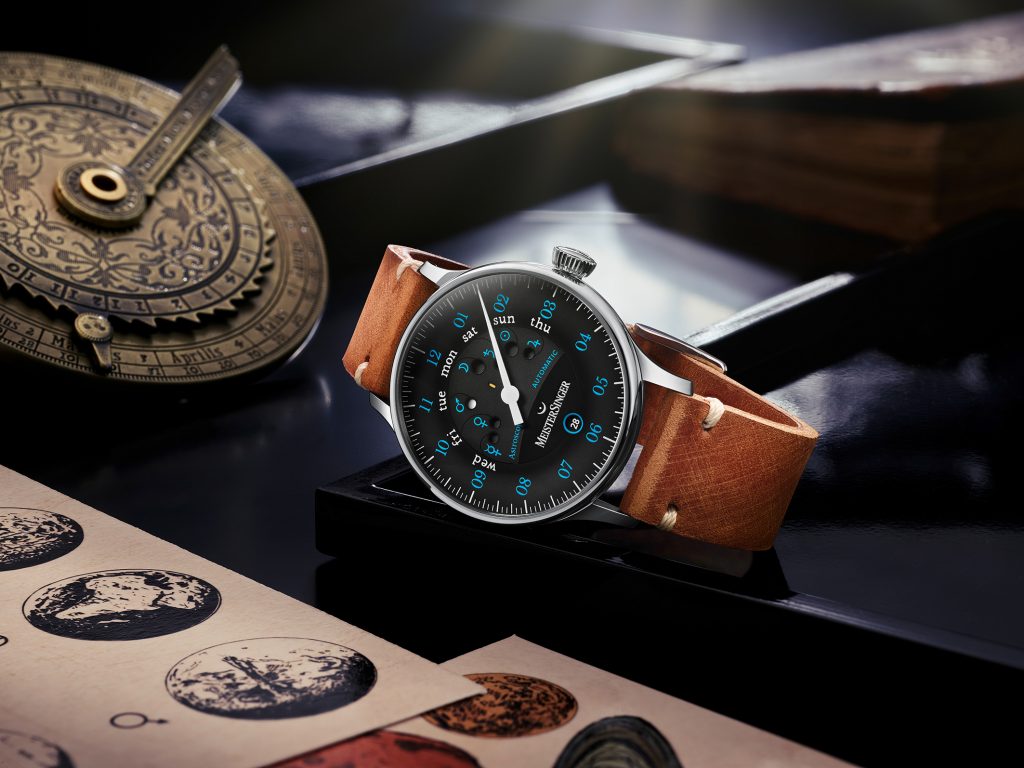
Whilst previous watches have tracked the movements of the sun and the moon which divide our days and nights, as well as the 12 months of the year, the days of the week, have not been considered within the creation of modern watches. Whilst the days of the week don’t follow an astronomical rhythm they do have mythological roots.
The method most likely dates back to the Babylonians, who considered the number seven to be especially holy and connected with seven heavenly bodies, i.e., the Sun, the Moon, Mars, Mercury, Jupiter, Venus, and Saturn. The planets are well known for being named after the Roman gods and within English and German, the days of the week were named from Norse Mythology.
The allocation of celestial bodies to days of the week has stood the test of time as shown below by a rare constellation in 2020:
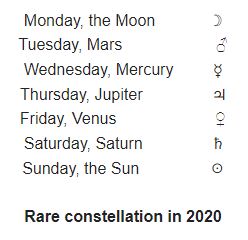
The Astroscope shows the days of the week wandering back and forth in a constellation that only occurs every ten to twelve years in the southern night sky of the northern hemisphere. In July 2020, with the exception of the Sun, of course, all the celestial bodies of the weekdays will be visible there at the same time. The Astroscope styles this formation on its dial; a bright dot appears on Monday at about 12 o’clock at the Moon symbol and the next day to the right at the Mars symbol. On Wednesday it appears next to Mercury at about 9 o’clock; on Thursday next to Jupiter at 3 o’clock.
In reality, it does not jump back and forth. Under the dial, a large weekday disk with a number of bright dots on it moves one step further from one day to the next, always moving in a circle, just as it is in the world of celestial mechanics.
This is the first MeisterSinger of its kind which comes with a long history that is beautifully displayed across the dial. This model will initially come in two different styles, although both come with a dark dial that replicates the night sky, there will be two different tones of brown leather straps to choose from. The markings on the dial also come in two different variants, the model with the darker coloured strap showing off rich blue markers and the light brown strap displays markers in the colour ‘Old Radium’.
What are your thoughts on The Astroscope by MeisterSinger? Let us know in the comments below.


